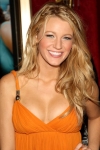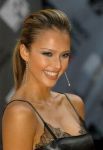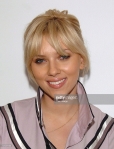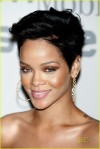It’s the last post of the Decades of Beauty series! It’s cool that it only took me five years to finish it, right? That’s not that long in the scheme of things. I mean, I covered nine decades in five years. That’s actually quite impressive.
This post will cover beauty trends up through 2010. That decade is called the “aughts”, which is a weird word. It sounds like something a person trying to be cool would say. Like “Bro, you remember that time in the aughts?” I personally prefer “the early 2000s” or “the previous decade.”
Anything after 2010 is part of the decade we are in, so I can’t write about that for another three years. Maybe I’ll be on schedule for that post. Maybe.
Although I lived through it and started my career as a makeup artist during the previous decade, it is difficult to write about in a way because we are not far away removed from that decade to see all of what was cheesy, weird or trendy. Some of what became popular 10 or 15 years ago is still popular today. But other trends–zig zag parts, anyone?–were short-lived enough to easily write about. So I’m gonna give this a go.
Ten years made a big difference in what was considered an attractive skin tone for Caucasian women. In the early 90s, pale skin was attractive. Even if foundation made your skin a little lighter, that was no big deal. By the early 2000s, tanning beds, self tanner and bronzer were mad popular. Bronzed beauties (that’s the magazine world’s term, not mine) like Jennifer Lopez and supermodel Gisele Bundchen were emulated. Self tanner and bronzer continued to get less orange-y and better formulated, which is a positive. But the rise of tanning beds/booths brought about “tanorexics,” or people addicted to the tan they got from those machines. In the areas of the country I lived in between 2000-2010, there were tanning salons in every section of each city. Melanoma occurrences increased significantly between 1990 and 2010, which I think could be partly due to fake tanning. Those who were lucky enough to not get skin cancer from regular fake tanning almost certainly have some skin damage today. I am kicking myself for tanning in high school and college. I didn’t do it regularly, but I’ve had five pre-cancerous moles removed in the last six years, and I think tanning booths/beds played some part in that.
Okay, off my soapbox. My point is that tanned skin became a desirable look in the early 2000s and is still part of the beauty world today. If it was out of fashion, there would be a much smaller self tanner market and spray tan techs would be struggling. I get it–I am one of those people who likes to (safely) look tan. I get a spray tan a couple times a year, and I’m a pretty regular Jergens Natural Glow user. I say it’s because I think tan skin looks better with my coloring–dark eyes, hair and eyebrows–but maybe I’m more influenced by the tan trend that I thought.
For women of color, ten years made a huge difference in what was available for foundation shades. More lines developed shades that would match all skintones. Some lines, like IMAN Cosmetics, were specifically created for darker skin. There are still some companies today that need to catch the hell up and add some darker colors to their lines, but the options have definitely improved and continue to grow.
Mineral makeup became big around 2005 due to the success of the bareMinerals line by Bare Escentuals. It seemed like for a while there, everyone was swirling, tapping and buffing. I always ask clients what they normally use for foundation and although I still hear “bareMinerals,” I hear it less than I did a few years ago. I think that’s because women are getting less afraid of liquid foundation, as there are so many great ones now on the market. (Some gals have also gone down the BB or CC cream routes.) In the last decade, we said goodbye to the days of only full coverage, all pink-undertoned shades available.
The trendy eyebrow of 2000 was a lot thinner than the trendy eyebrow of 2010. It was fuller than the early 90s brow, but not quite Cara Delevingne level. One of the big differences between the brows of ten years ago and today is the level of brow powder or pencil used. Filling in brows wasn’t a thing for the average woman in 2006, but as you may have noticed if you’ve ever been on Instagram, it’s almost standard now.
Whatchu know about the smokey eye? This trend became extremely popular in 2007 and stuck around for several years. It was hands down the biggest request I got when I started working as a professional makeup artist in 2008. I still get the request, but now it’s more like “Can you make my eye makeup a little smokey?” A true smokey eye is shades of eye makeup done on a gradient. So the darkest color is closest to the lashline and the colors used get lighter as you move towards the crease. (On the lower lashline, it’s darker at the lashline with a lighter color or colors under that.) The smokey eye started in the 1920s, so this trend, like many others, is a recycle of something that’s already been done. The difference between 2007’s smokey eye and 1927’s smokey eye was that a) There were many more eyeshadow colors and textures to choose from in 2007 and b) Brows weren’t the thin, low, drawn-in brows of the Jazz Age, and brow style makes a huge difference in how a smokey eye looks.
Lashes started getting a lot of love (and sometimes, abuse) by the end of the early 2000s. False lashes have been around since the 1920s, but other than a resurgence in the mid 1960s had been mostly the domain of models and celebrities. I don’t know the exact statistics on this, but I feel confident that false lash sales have increased dramatically since 2010. Lash extensions are also very popular and using Latisse to increase lash growth had its moment. New mascaras that promise the world come out every day, and the creation of new, supposedly groundbreaking mascara wands–many of them garbage–started around 2006. The desire for long, full lashes became so strong that cosmetic companies were using false lashes in their mascara ads and got called out on it. That is true false advertising. (Ohhhh! Killed it.) Companies now have to put disclaimers on ads saying the model is wearing “lash inserts.” I think that happened because I bitched about it so much on Facebook and this blog…
Your lipgloss be poppin’? You know it was if you were under 35 between 2000-2010. The glossy lips trend gained traction in the late 90s and went strong up until the past few years. The trend now is matte lips, although I keep seeing runway trends of glossy lips trying to be a thing again. (It’s all cyclical, folks.) Nude lips were also very popular during the previous decade, especially when paired with a smokey eye.
Acrylic nails, particularly with a French manicure, were the go-to look for nails up to about halfway through the previous decade. By 2010, 63% of nail salons were offering the new popular nail polish option–gel manicures. This type of polish, if you can even call it that, was invented in the 1980s but due to some product flaws and limited education on the service, faded out for 20 years. From what I can tell–and this could just be the part of the country I live in–gel manicures are now considerably more popular than acrylic nails. In the almost 40 weddings I have personally done this year, I have seen acrylic nails exactly twice. Everyone else has had gel manicures, which tells me this 2010 trend is still going strong.
What was hair looking like in the last decade? Up through 2005, chunky highlights, zig zag hair parts and two-toned hair–think Cristina Aguilera during her “Dirty” era–were big. Flat iron mania hit around 2008. The flat iron itself had existed for over 100 years, but with its ceramic plates and adjustable heat settings, the flat irons of the later part of the last decade were far superior to their predecessors. And so, flat ironed hair became popular. Smooth, sleek and shiny was the goal, and a good flat iron and the right products could deliver.
Hair extensions had been used on models and actresses forever, but during this decade, that secret came out and they became mainstream. African American women had been getting weaves (sewn or braided-in extensions) for years, but the hair extensions I’m referring to were mostly clip-in, glued-in or taped-in extensions. Extensions are still popular today. Just ask the legions of guys who have put their hands through their girl’s hair and felt a clip, bead or tape.
While having a lot of hair on your head was a good thing during this decade, having hair elsewhere became undesirable to many. Chances are you never even heard of a Brazilian Wax–unless it’s some type of candle I don’t know about–before 2000. But starting around the beginning of this century, it became a common service offered by many salons and spa. Laser hair removal, which can be done on any body part, became popular. The majority of hair removal service clients are women, but some men have jumped on board too. Steve Carell’s chest waxing scene in The 40 Year Old Virgin comes to mind…
Injectables like Botox, Juviderm and Restylane became mainstream in the middle of the last decade. Chemical peels and lasers that reduce pigmentation also grew in popularity. More dermatologists and estheticians came out with their own skincare lines and regular facials became more commonplace. A greater emphasis was placed on clear, youthful skin during this decade, and that has only increased in recent years.
There are a lot of other areas related areas I could get into–YouTube beauty tutorials, the creation of Instagram and its influence on the beauty industry, the effect of HD filming, the start of the extreme retouching era, etc.–but I suspect you’ve had enough.
I hope you’ve enjoyed this post and any of the other Decades posts you may have read. I love learning about the trends and backstories of those trends from different decades. But when it comes to trends, I say don’t follow them because you feel you should. Choose products, looks and styles that best flatter and work with your features, skintone, coloring, hair type, etc. Looking and feeling your best will always be in style.
Have a beautiful day 🙂





















































